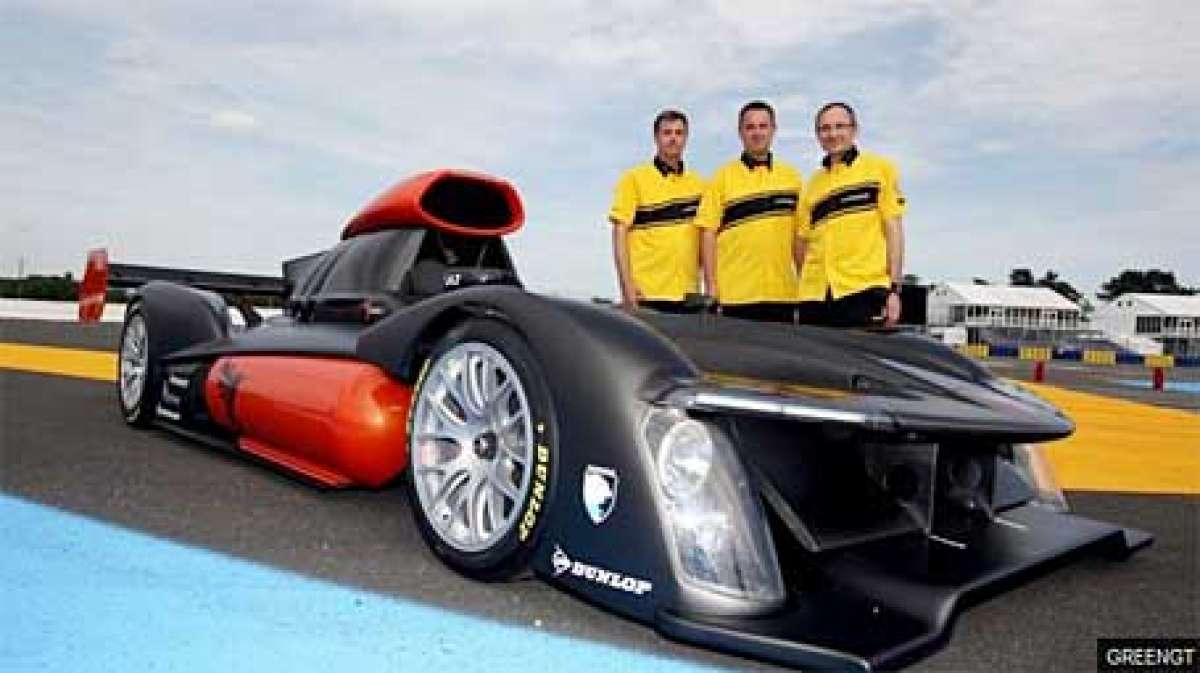Endurance racing is one place where electric cars have yet to make a showing. Until now. Distance is where hydrogen fuel cells can shine and the GreenGT LMP exemplifies that as a purpose-built Le Mans endurance racer.
The GreenGT's team has secured sponsorship from Dunlop's racing tires division and received a reservation for pit box #56 in the 2013 24 Hours of Le Mans.
The GreenGT is no slouch on the track either. Powered by two motors, combining to put out 537 horsepower and 2,950 pound-feet of torque.. all going to those two rear wheels, which will now be clad in high performance Dunlop tires. The car's fuel supply will propel it up to 186 miles per hour for about 40 minutes per tank. That's on par with most similar Le Mans cars. By comparison, the Audi R 15 TDI LMP1, considered one of the best recent contenders on the track, had a V10, 5,500cc diesel engine that outputs 590 horsepower and 775 lb-ft of torque (at peak).
Although other hydrogen fuel cell (HFC) vehicles have run Le Mans, including the Mazda RX-8 RE, none were purpose-built for the 24 Hours race like the GreenGT Le Mans Prototype is.
For its 2012 showing, the GreenGT used hydrogen produced entirely through electrolysis using solar panels and waste water. It was driven by famed Le Mans veteran Christian Pescatori.
Recent rule changes at Le Mans required the cockpit to be closed and pit crews to be limited to one active pneumatic wrench. Traditionally, drivers would exit the car to assist or refresh, but with closed cockpits this has become more awkward. In some ways, this actually gives hydrogen an advantage. We'll see next year.






Comments
Hum, a fast driving hydrogen
Permalink
Hum, a fast driving hydrogen pressurize tank bomb... Takes a lot of guts to drive this thing that fast that long.
No worse than the jet fuel
Permalink
In reply to Hum, a fast driving hydrogen by Nicolas Zart
No worse than the jet fuel most of the other cars in the race will have on board.
Well, one explodes slowly,
Permalink
In reply to No worse than the jet fuel by Aaron Turpen
Well, one explodes slowly, the other very quickly. I guess it depends how you fancy to go.
Assuming it explodes.
Permalink
In reply to Well, one explodes slowly, by Nicolas Zart
Assuming it explodes. Hydrogen doesn't explode, it fireballs. Doesn't sound like much of a difference, but if you know about pressure, it's a huge difference. Even compressed, H2 does not just "explode" like a bomb. It instantaneously fireballs and then is done. The longer explosions are a lot more worrisome. A demolition expert would never use H2 for anything but special effects.